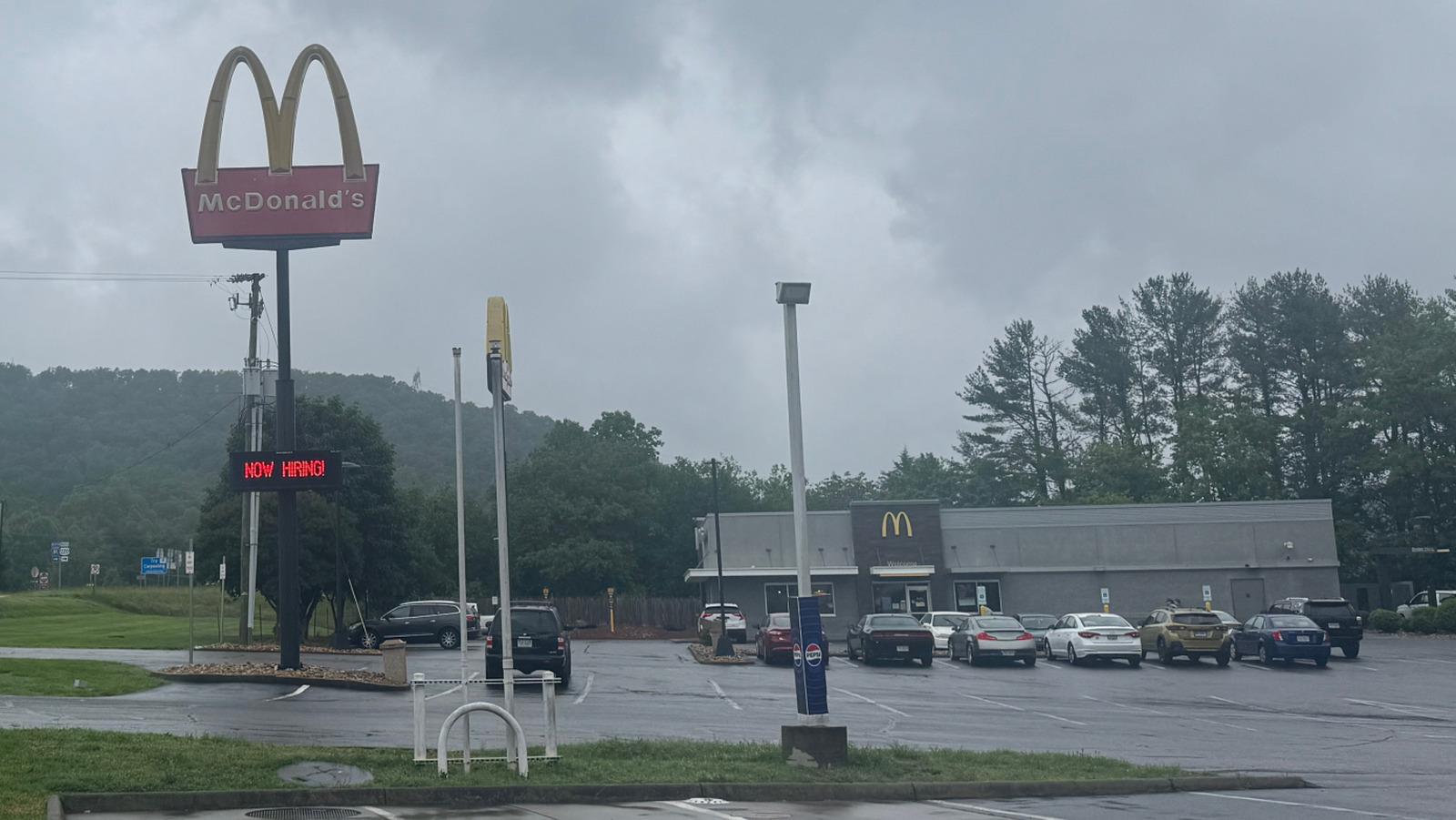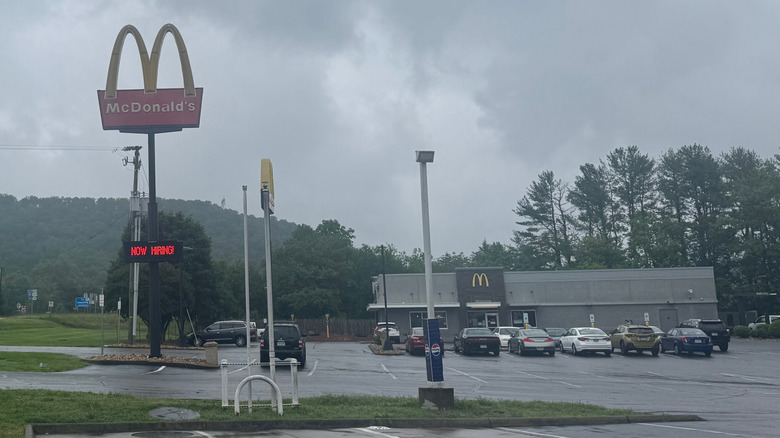
Alexandra Adele/Shutterstock
McDonald's built a global empire on consistency, convenience, and crowd-pleasing classics. However, even the minds behind the golden arches aren't immune to missteps. Over the years, the fast-food giant has introduced ambitious new products, redesigned its restaurants, and even launched an entire spinoff chain, only to watch many of these changes backfire spectacularly.
Some of the McDonald's misfires were driven by shifting consumer trends, cost-cutting efforts, or corporate experimentation. Regardless of the motivation behind them, several of these changes left customers confused, disappointed, or outright angry.
From popular McDonald's items that were discontinued — like the McD.L.T. and Cinnamon Melts — to bold swings and misses like McPizza and a McDonald's hot dog, not every golden idea turned out to be a roaring success. In other cases, the company changed too much of what customers loved, such as altering its recipe for cooking fries and overhauling the look of its classic restaurants to become less bright and cheerful. While not always contentious, these changes were no doubt bound to stir up debate.
The launch and crash of CosMc's
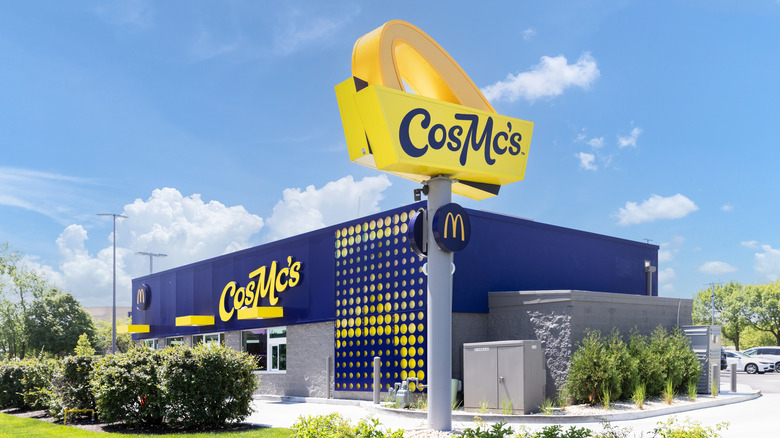
Joseph Hendrickson/Shutterstock
In late 2023, McDonald's launched a highly anticipated spinoff chain called CosMc's — a drink-focused concept named after a little-known McDonaldland alien mascot from the '80s. The new venture was meant to rival the likes of Starbucks and Dunkin' with a menu packed with cold-brew coffee, iced latte, and quirky food items like blueberry-lemon sundaes and the Creamy Avocado Tomatillo Sandwich. But by May 2025, McDonald's announced it would shut down its CosMc's test locations, effectively calling time on the experiment within a matter of months after it began.
The concept was first launched with a location in Bolingbrook, Illinois, with McDonald's executives aiming to create a beverage-centered brand geared towards afternoon traffic. When starting out this enterprise, the company planned to expand CosMc's to about 10 locations by 2025, including multiple sites in Texas.
Despite initial buzz, CosMc's quickly drew criticism from customers and analysts. The new chain's disjointed menu offerings, focus on drive-thru customers, and underwhelming marketing didn't sit well with many fast-food fans. One commenter on Reddit bluntly called CosMc's "another blunder by McDonald's executives. I thought the clown was only the mascot, but the entire management team seems to be entirely made up of clowns."
Stopping the all-day breakfast menu just 5 years after introducing it
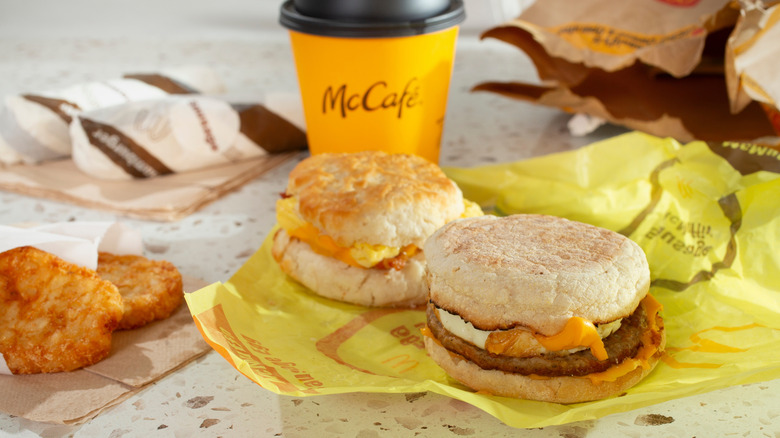
The Image Party/Shutterstock
When McDonald's introduced all-day breakfast in 2015, customers were thrilled. The move catered to diners who craved Egg McMuffins and hash browns long after traditional breakfast hours had passed. Sales figures immediately jumped in the following months, and it was considered as a wildly successful McDonald's menu expansion.
However, by March 2020, all-day breakfast at McDonald's was shelved, reportedly as a temporary measure to simplify kitchen operations during the COVID-19 pandemic. But the change stuck. While individual franchisees can determine the hours when breakfast is sold at the McDonald's locations they operate, the chain generally stops serving McMuffins and hash browns at 11 a.m. or earlier.
The decision left many fans disappointed. Some McDonald's employees have taken to social media to explain that while all-day breakfast boosted sales, it also complicated workflows and slowed down service, particularly during busy lunch and dinner hours. Still, for customers who loved ordering hotcakes in the evening, the loss of flexibility has remained a sore spot.
Discontinuing Cinnamon Melts due to high production costs
Few discontinued McDonald's items inspire as much longing as Cinnamon Melts. Introduced around 2007, these warm, gooey, miniature-sized cinnamon rolls were compared favorably to the confections of Cinnabon. They were a hit with customers seeking something sweet to pair with a morning coffee.
Despite their popularity, McDonald's phased out Cinnamon Melts by 2017, supposedly due to steep production costs, low sales, and because the process of preparing them was relatively difficult. They also required unique packaging to contain the icing, which may have hindered efficiency in McDonald's kitchens.
Diners were not happy. Commenters on multiple online forums have lamented the item's disappearance. Some speculate that despite being delicious, Cinnamon Melts were simply not profitable enough to remain on the menu. Years later, people are still begging for their return. But McDonald's management doesn't appear to be budging from the decision to discontinue Cinnamon Melts, even ignoring an online petition with over 18,000 signatures to demand the return of this sweet-and-spiced treat.
Discontinuing Fish McBites months after their introduction
In early 2013, McDonald's attempted to ride the wave of nugget-style innovation with Fish McBites — a bite-sized, breaded take on the pollock used in its classic Filet-O-Fish sandwich. Initially marketed as a limited-time offering for the period of Lent, the product aimed to attract customers seeking a non-meat option. It was also intended to appeal to younger diners as a Happy Meal option.
But Fish McBites didn't stick around. The menu item was discontinued after just a few months. Despite a flashy rollout and considerable marketing investment, McDonald's fish nuggets failed to make a lasting impression. Customer feedback was lukewarm, with reviews stating that the nuggets lacked flavor and had an unappetizing texture.
Years later, Fish McBites appear to be remembered more for the menu item's obscurity rather than its taste, with one person on Reddit alleging that "there is seemingly no evidence of them ever existing." Despite Fish McBites being a huge flop, the classic Filet-O-Fish sandwich is still loved and enjoyed by seafood lovers in multiple countries around the world.
Pulling the Big N' Tasty burger due to its large size
Originally introduced in California in 1996, the Big N' Tasty featured a quarter-pound beef patty with lettuce, tomato, onions, and pickles on a sesame seed bun. It was sold nationally by 2001, and for a while it was considered as a staple of the McDonald's Dollar Menu.
Despite garnering many fans, it's widely reported that the Big N' Tasty was quietly discontinued in most U.S. locations by 2011, although it's still sometimes available with some variations at a number of international restaurant sites. McDonald's management has explained that this burger's size presented a logistical challenge, stating that keeping it as a regular menu item would hinder the chain's ability to cook other special-offer burgers introduced for a limited time.
Nostalgia for the menu item remains strong, with many people taking to online forums and wondering whatever happened to McDonald's Big N' Tasty burger. Diners still share fond memories of the Big N' Tasty, especially from during the time when it cost $1.
Redesigning its formerly vibrant decor
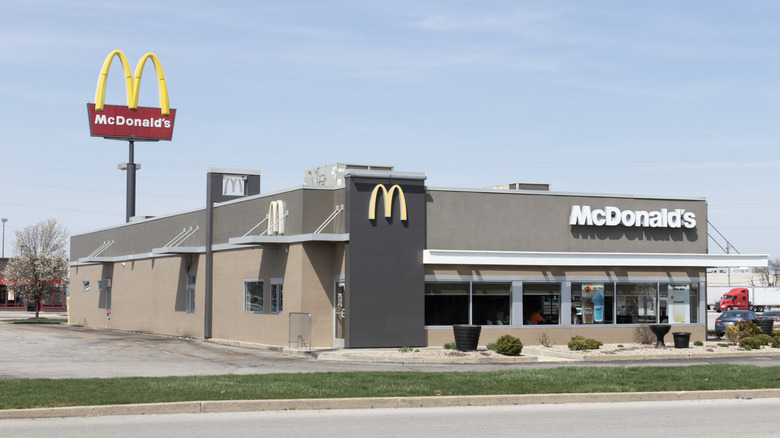
Jetcityimage/Getty Images
In the mid-2000s, McDonald's began overhauling its iconic red-and-yellow buildings, phasing out the interiors dominated by colorful plastic and replacing them with darker hues, wood fixtures, and sleek furnishings. This rebranding aimed to present a more sophisticated image, hoping to attract adult diners seeking a less garish dining setting.
While the effort aligned with broader trends in fast-casual dining, many customers felt the redesign stripped away the brand's charm. Instead enjoying a bright, family-friendly atmosphere, the new decor at McDonald's has left visitors complaining on Reddit that the restaurants look "sterile" and "eerily similar" to each other. One commenter shared the following question: "When did McD go from a happy, fun-loving child to a depressed, midlife-crisis adult?"
Other online commenters theorize that McDonald's needed to diminish its focus on attracting children to eat fast food, and that the less-distinctive design will make it easier to repurpose McDonald's locations that shut down. While the rebranding may have met some of McDonald's strategic goals, it also seems to have created a disconnect for loyal customers who miss the playful aesthetics and family-centric vibe of its previous aesthetic style.
Launching the McAfrika and sparking huge controversy
In 2002, McDonald's released the McAfrika in Norway — a pita-style sandwich filled with beef, cheese, and vegetables — that was meant to evoke African flavors. But the timing couldn't have been worse. The launch occurred during a severe famine in Africa that affected some 12 million people. Humanitarian groups quickly condemned the campaign as tone-deaf and insensitive.
Following the backlash, a McDonald's spokesperson acknowledged the appearance of insensitivity, but the chain did not immediately remove the McAfrika from its Norway menus. While McDonald's officials welcomed famine-aid organizations to place donation boxes and fundraising appeals in its Norwegian restaurants, this wasn't enough to stop the criticism. To this day, the ill-timed McAfrika launch is considered among the biggest mistakes ever committed by the fast food chain.
Unbelievably, the controversy resurfaced in 2008 when McDonald's Australia attempted to a launch the similarly named McAfrica burger as part of a limited-time promotion connected with that year's Olympic Games. This incident did not inspire the same level of protests as seen in Norway six years earlier, but it again drew attention to the questionable decisions of McDonald's marketing practices.
Launching the McSalad Shakers only to discontinue them 3 years later
In 2000, McDonald's introduced McSalad Shakers, a portable serving of chopped greens served in a clear plastic cup. Customers were encouraged to pour in dressings like ranch, Thousand Island, or herb vinaigrette, then shake the container, and enjoy a healthier fast food option on the go. This innovation was meant as an offering for health-conscious consumers.
Despite being offered in three versions — Garden, Chef, and Grilled Chicken Caesar — and sold for relatively low prices, McSalad Shakers were discontinued in 2003. While it's difficult to find any detailed explanation about what happened to McDonald's McSalad Shakers, McDonald's management has expressed in recent years that demand for salads at the fast food chain is generally low.
Nonetheless, some fans remember McSalad Shakers fondly as a relatively healthy McDonald's menu option that was actually tasty and convenient. Although short-lived, these portable salads remain a cult favorite among a dedicated cadre of online commenters who clamor for their return.
The debut and discontinuation of McDonald's McD.L.T.
The McD.L.T. — short for "McDonald's lettuce and tomato" — was launched in the mid-1980s as a premium burger with packaging designed to keep the hot and cold ingredients separated. It came in a two-sided styrofoam container: one side for the hot beef patty and bottom bun, and the other side for the lettuce, tomato, cheese, and top bun. This design promised a fresher burger that diners could assemble just before eating.
While some customers appreciated this burger's taste and novel container, environmentalists were less enthusiastic. As the public was becoming aware of the growing amount of non-biodegradable waste going to landfills, the McD.L.T.'s oversized polystyrene packaging drew heavy criticism. As pressure mounted from the controversy, McDonald's faced a public relations dilemma.
By the early 1990s, the McD.L.T. was canceled. Over the following years, McDonald's joined other fast food chains in the eco-friendly trend to serve menu items in durable paper containers instead of polystyrene packaging. The rise and fall of this McDonald's burger became an emblem of the turning point in how fast food companies approach environmental responsibility; today an original McD.L.T. container is exhibited in the National Museum of American History. A few fans still praise this sandwich — "It really was probably the best burger McDonald's has ever had," wrote one commenter on Reddit — while acknowledging that it had to go for the sake of the planet.
Launching the McHotDog
Although McDonald's has experimented with diverse food items, one handheld meal that never gained traction was the McHotDog. Originally sold at select locations in the U.S. in 1995, it was introduced despite strong objections from the chain's founder, who died more than a decade before the launch. Ray Kroc didn't think McDonald's should sell hot dogs, because he believed that the sausages' mystery-meat reputation is not compatible with the chain's quality standards. Kroc even made this clear in his autobiography, "Grinding It Out: The Making of McDonald's."
Despite Kroc's overt misgivings about dishing out frankfurters beneath the golden arches, McDonald's corporate management gave the McHotDog a shot — and it quickly became one of the biggest flops in McDonald's history. But while the chain's U.S. customers clearly didn't want this product, McDonald's hot dogs continually made sporadic appearances over the years at international locations, reportedly surfacing in Germany and on the restaurant's breakfast menu in Japan.
Nonetheless, McDonald's never successfully established hot dogs as a permanent menu item. For most customers, the McHotDog remains a forgotten oddity, probably proving that Kroc was right all along.
Halfheartedly offering the McLobster
McDonald's has dabbled in varied seafood offerings, and one of its most curious was the McLobster. First introduced in 1993 and reportedly limited to markets in New England and eastern Canada, the McLobster was a sandwich similar to a lobster roll, made with Atlantic lobster meat, lettuce, and a light sauce, all served in a long bun.
The McLobster had its fans, and for quite a few years it occasionally appeared as a seasonal item on McDonald's menus in states like Maine, New Hampshire, and Massachusetts, as well as Canada's Atlantic-coast provinces. However, the sandwich never went national. This is likely due to the price of lobster varying considerably depending on the season and region, making it a difficult food to order regularly for a fast food chain known for uniformity. In 2017, McDonald's Canadian management specifically cited price concerns as the reason why the McLobster would not be offered at any restaurants that year, leaving aficionados of the sandwich high and dry.
Changing its apple pies from deep-fried to baked at most U.S. locations
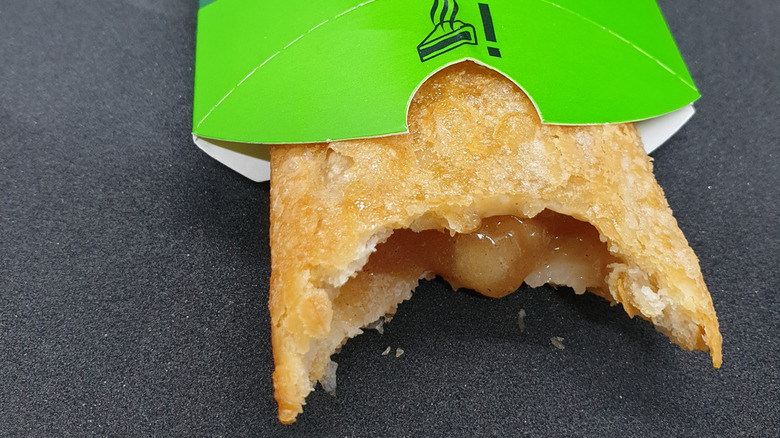
Cik In/Shutterstock
For years, McDonald's deep-fried apple pies were a customer favorite. With their golden-brown, crispy crust and sweet filling, they were a staple dessert of the chain from the 1960s through the early 1990s. But in 1992, McDonald's made a controversial change: At most U.S. locations, employees started baking apple pies instead of frying them. This new cooking technique was meant as part of an effort to provide healthier menu items, but sweet-toothed diners were not pleased.
Fans of the original pies lamented the loss of the crispy texture and piping-hot filling of the deep-fried apple pies. Luckily for them, some McDonald's locations continue to sell the fried versions, such as a historic McDonald's in Downey, California, as well as the chain's restaurants in Hawaii. Although McDonald's has tweaked the recipe of its baked apple pies over the years — switching to a lattice crust and adjusting the filling ingredients — critics argue that the newer version never measured up to the deep-fried pies.
Introducing the McLean Deluxe
In 1991, McDonald's debuted the McLean Deluxe, a low-fat hamburger aimed at health-conscious consumers. Billed as a 91% fat-free alternative to standard burgers, the McLean Deluxe featured a patty made with lean beef that was blended with carrageenan — a seaweed-derived thickener — to retain moisture and texture.
Initially, the McLean Deluxe seemed poised for success. McDonald's spent a fortune (reportedly at least $50 million) developing and marketing the new item, positioning it as a health-boosting revolution in fast food. But almost immediately, the McLean Deluxe ran into trouble. Customers complained that the burger lacked flavor, and couldn't sufficiently satisfy their hunger. Other diners were less than enthusiastic about consuming seaweed in their fast food.
People stopped buying the McDonald's McLean Deluxe, and by 1996, it was quietly removed from McDonald's menus. Though the chain attempted to lead a charge into the realm of healthy fast food, this failure showed that flavor can't be sacrificed beneath the golden arches — even in the name of nutrition.
Cooking fries in vegetable oil instead of beef tallow
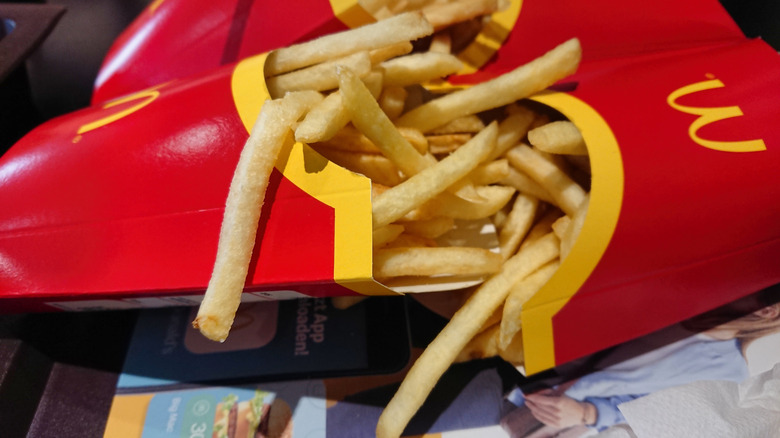
CuteIdeas/Shutterstock
There was a time when McDonald's french fries were arguably the best in the fast food business — but many say that McDonald's fries don't taste as good as they used to before 1990. That year, the company made a major behind-the-scenes shift in its use of cooking oil, ditching beef tallow and switching to vegetable oil.
Nutritionally, the change seemed like a good idea. Beef tallow is high in saturated fats, while vegetable oil primarily contains unsaturated fat, making it a seemingly heart-healthier option. However, many customers felt betrayed when they noticed the change in flavor. The new fries lost savory depth, and yearnings for the original version quickly took root. In fact, restaurants where you can still order beef tallow fries remain in demand today. McDonald's did try to recapture the previous taste by adding beef flavoring to the oil blend, but critics still argue that the former fries were better.
The rollout and discontinuation of McDonald's Pizza
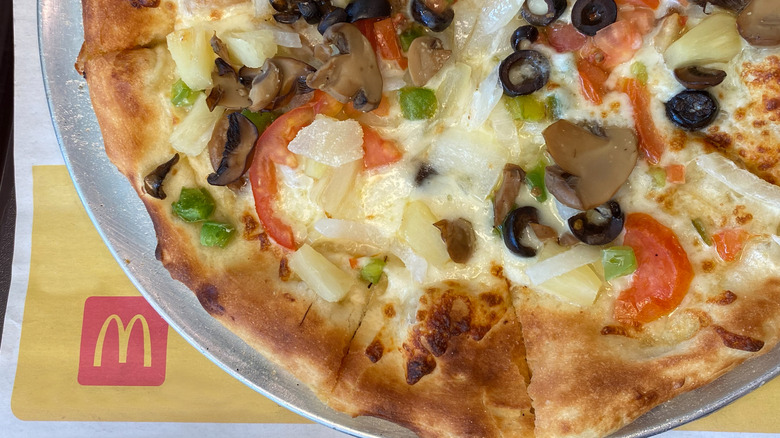
EWY Media/Shutterstock
Yes, McDonald's really tried selling pizza, but there's a good reason why many people aren't aware of that. The largely untold truth of McDonald's pizza began in the mid-1980s, as part of an ambitious attempt to diversify the chain's menu. By the early 1990s, McPizza had expanded to hundreds of test locations.
However, it wasn't long before the idea started to unravel. The process of making a McPizza took significantly more time than preparing burgers or fries, which slowed down operations in the chain's famously fast-paced kitchens. Many franchisees found the required ovens inconvenient to install. Extensive marketing efforts didn't help. The taste of McPizza is fondly recalled by some folks, but it never stood out in a crowded market among huge names like Pizza Hut and Domino's. By the early 2000s, McDonald's had pulled McPizza from most locations.
People now remember McPizza as either a quirky novelty or a misguided experiment. The failed launch provides proof that although McDonald's is a colossal brand, not every type of food belongs under the golden arches.



